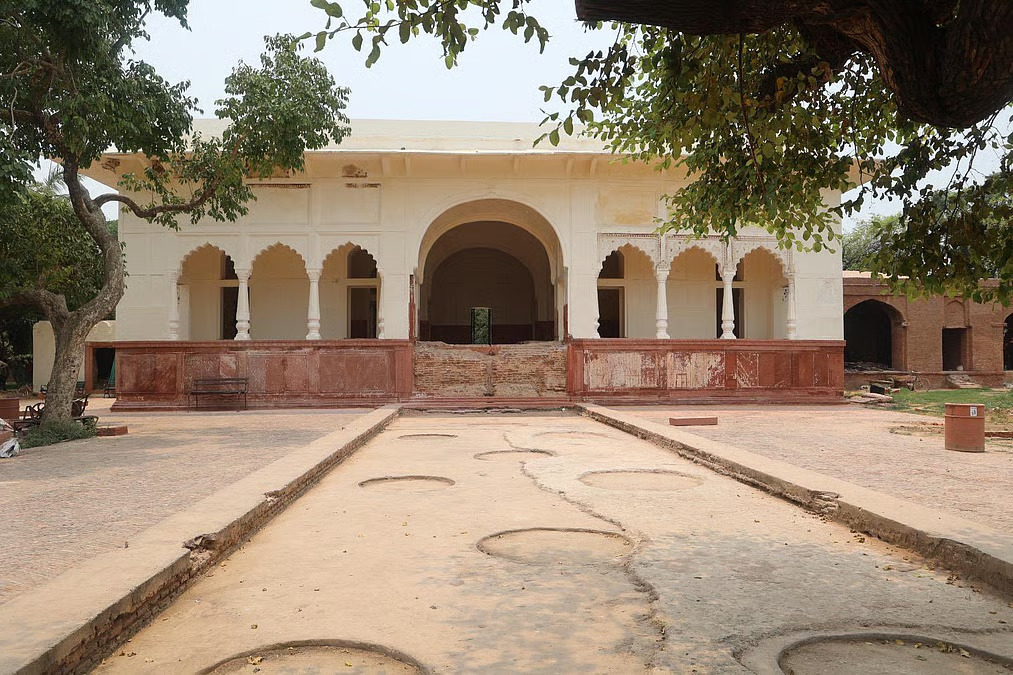One of Delhi’s forgotten Mughal marvels has finally stepped back into the public spotlight. After a long wait of nearly 370 years, the historic Sheesh Mahal in Shalimar Bagh has reopened to the public. Originally built in 1653 during the reign of Emperor Shah Jahan, the palace was once a royal retreat and later became a silent witness to key turning points in Indian history. Now, with the completion of a multi year restoration effort by the Archaeological Survey of India, visitors can once again walk through its delicate arches and glimpse remnants of its former grandeur.
The Sheesh Mahal, which translates to Palace of Mirrors, was designed as part of the sprawling Shalimar Bagh royal garden complex. Tucked away in north Delhi, the structure had long remained closed off and neglected. Over the years, weathering, urban expansion, and lack of attention had caused severe deterioration. Many parts of the structure were overgrown with vegetation, the stonework was crumbling, and original artwork had faded. It was only in 2021 that serious conservation work began, with ASI experts aiming to bring back the building’s lost dignity without compromising its authenticity.
The team used traditional materials like lime plaster and restored Mughal era motifs to match the original designs. The structure’s scalloped arches, jharokhas, and delicate floral patterns have been carefully preserved. Small traces of the mirror inlay that gave the palace its name still remain and have now been protected under museum like care. New lighting, security arrangements, and visitor friendly signage have also been added, ensuring that the site can be appreciated without risking further damage.
Historically, Sheesh Mahal served not just as a royal leisure space but also played a role in defining moments of power and politics. It is believed that Emperor Aurangzeb was crowned here in 1658 after overthrowing his father Shah Jahan. Later, during the Revolt of 1857, the area was reportedly used by British forces as a temporary base. These layers of history make the site particularly significant not just as an architectural gem but as a living document of Delhi’s evolving identity.
Despite its importance, Sheesh Mahal remained absent from most heritage maps of Delhi. Located near Bhalswa in north Delhi, away from the usual tourist circuits, the palace had been overlooked for decades in favor of more well known landmarks like Red Fort and Humayun’s Tomb. With this reopening, heritage enthusiasts and casual visitors alike now have a rare opportunity to explore a space that had all but vanished from public memory.
The restoration also holds promise for a wider revival of the entire Shalimar Bagh complex. Once designed in the classic Persian charbagh layout, the garden was meant to reflect the symmetry and philosophy of Mughal landscape art. While much of it has been lost to encroachment and urban sprawl, the revival of Sheesh Mahal could inspire further efforts to bring the garden’s historical narrative back to life.
Those visiting Sheesh Mahal can also explore surrounding heritage landmarks that add depth to a day trip. These include the Coronation Memorial, where British monarchs were declared emperors of India, the Mutiny Memorial that commemorates soldiers of the 1857 uprising, and remnants of ancient Mughal water systems that once irrigated the Shalimar grounds. For those willing to continue further south, the walk leads to the heart of Old Delhi with icons like Jama Masjid, Chandni Chowk, and the Red Fort, making it a full historical journey across time and empires.
The reopening of Sheesh Mahal is more than a tourist update. It is a reminder of how forgotten places can regain significance through thoughtful restoration and cultural vision. In a city layered with centuries of stories, Sheesh Mahal now returns as a quiet but striking chapter in Delhi’s living history.
Follow Travel Moves on Instagram and Facebook for the latest updates on heritage travel, hidden gems, and historic experiences across India.








